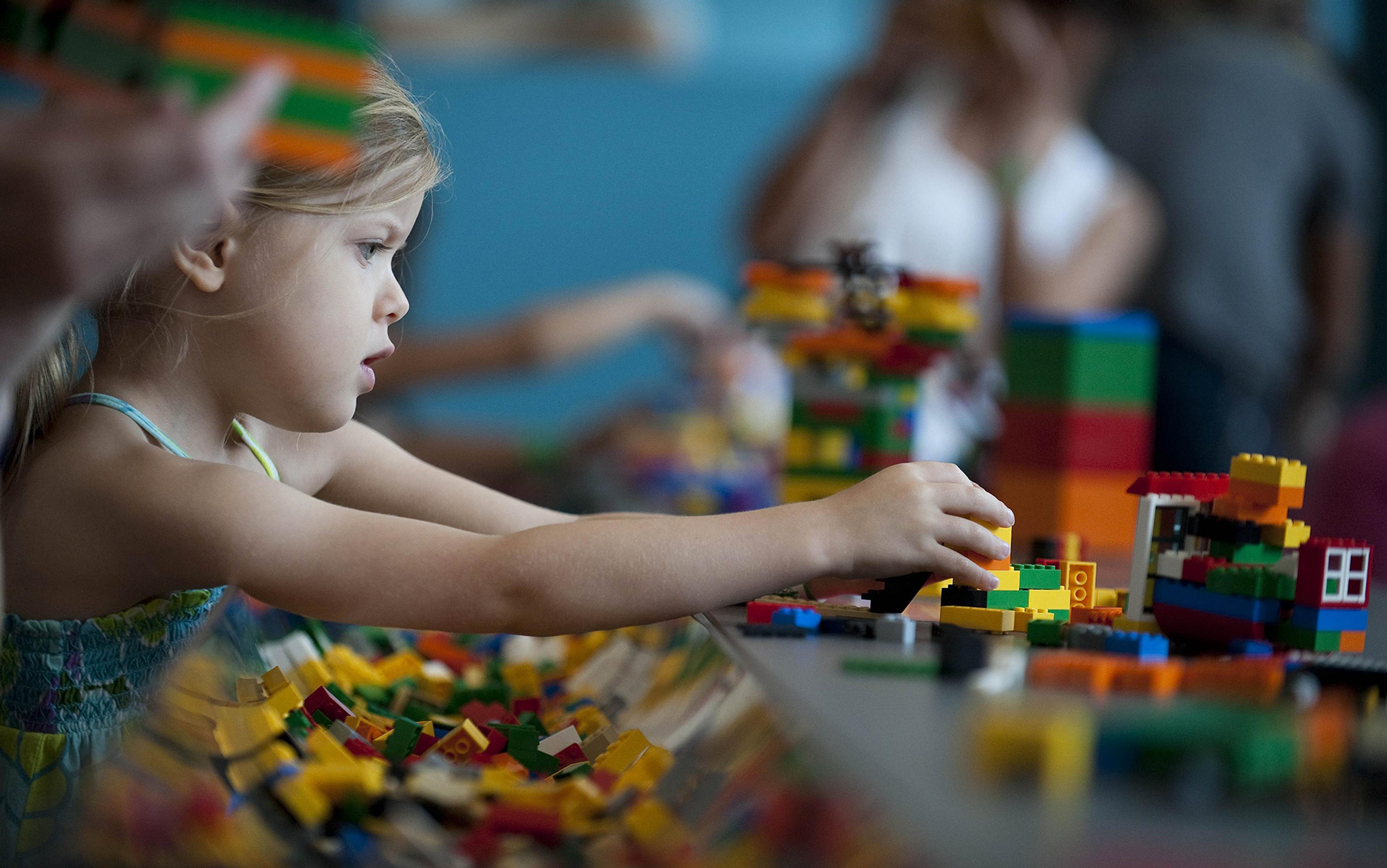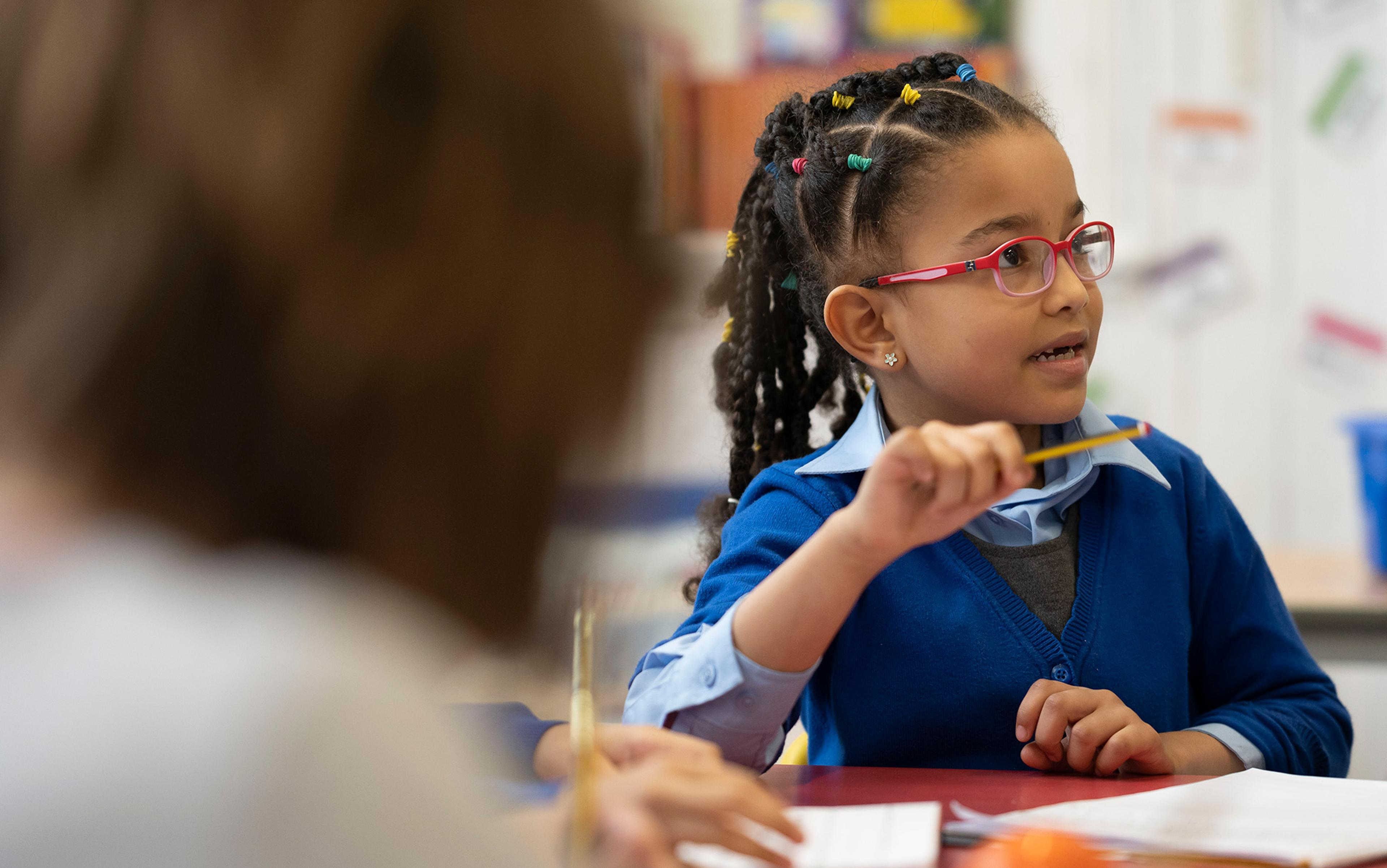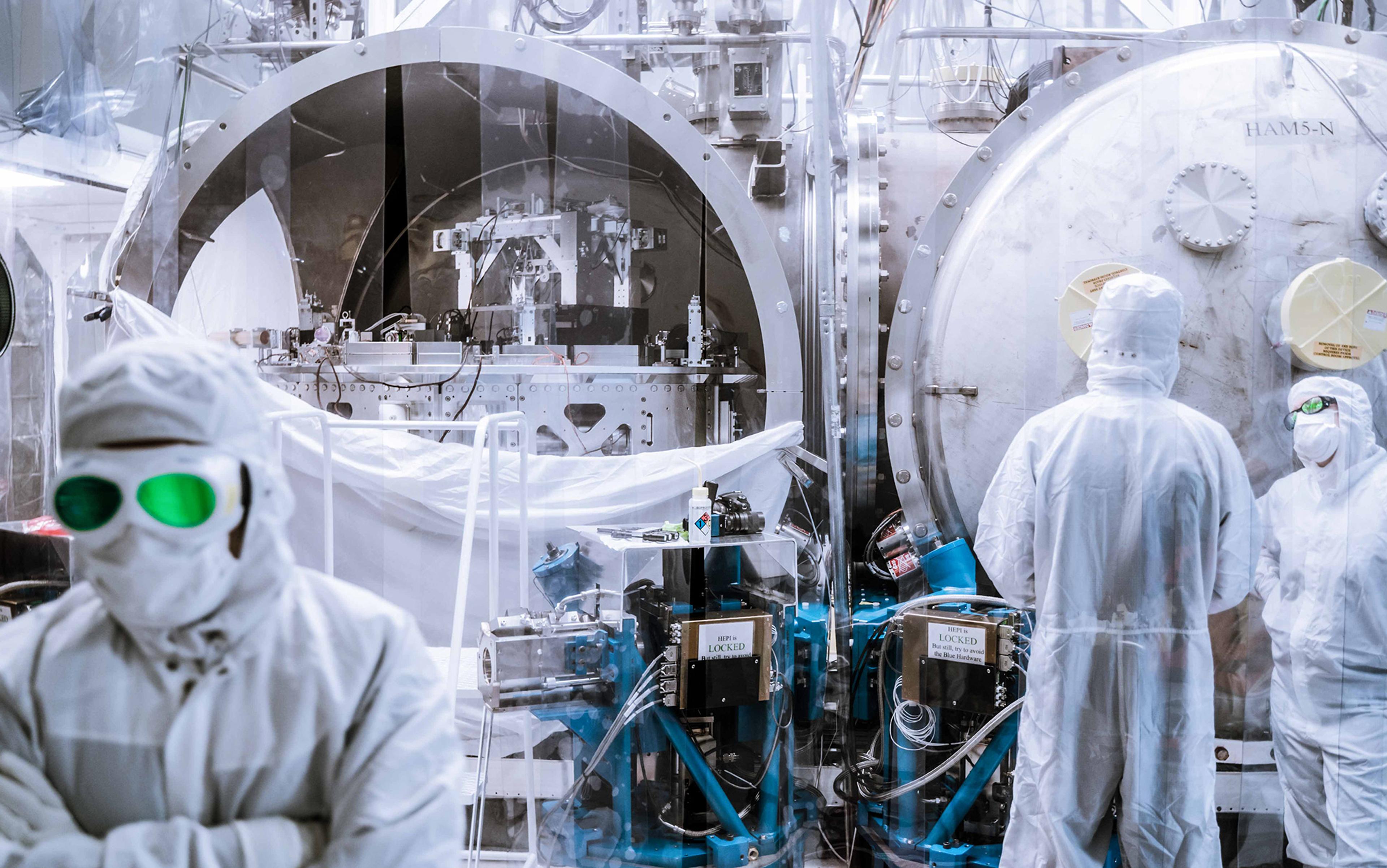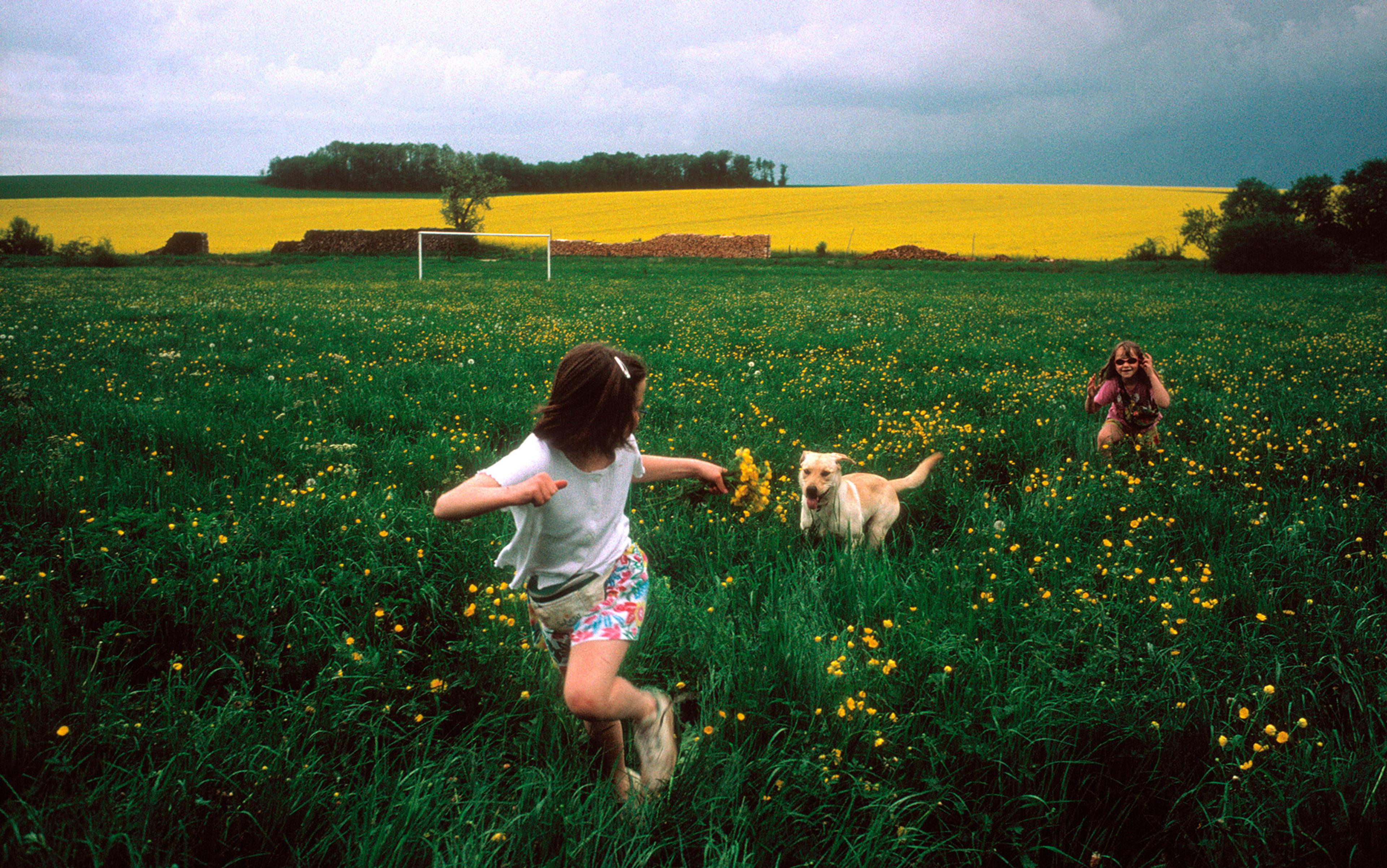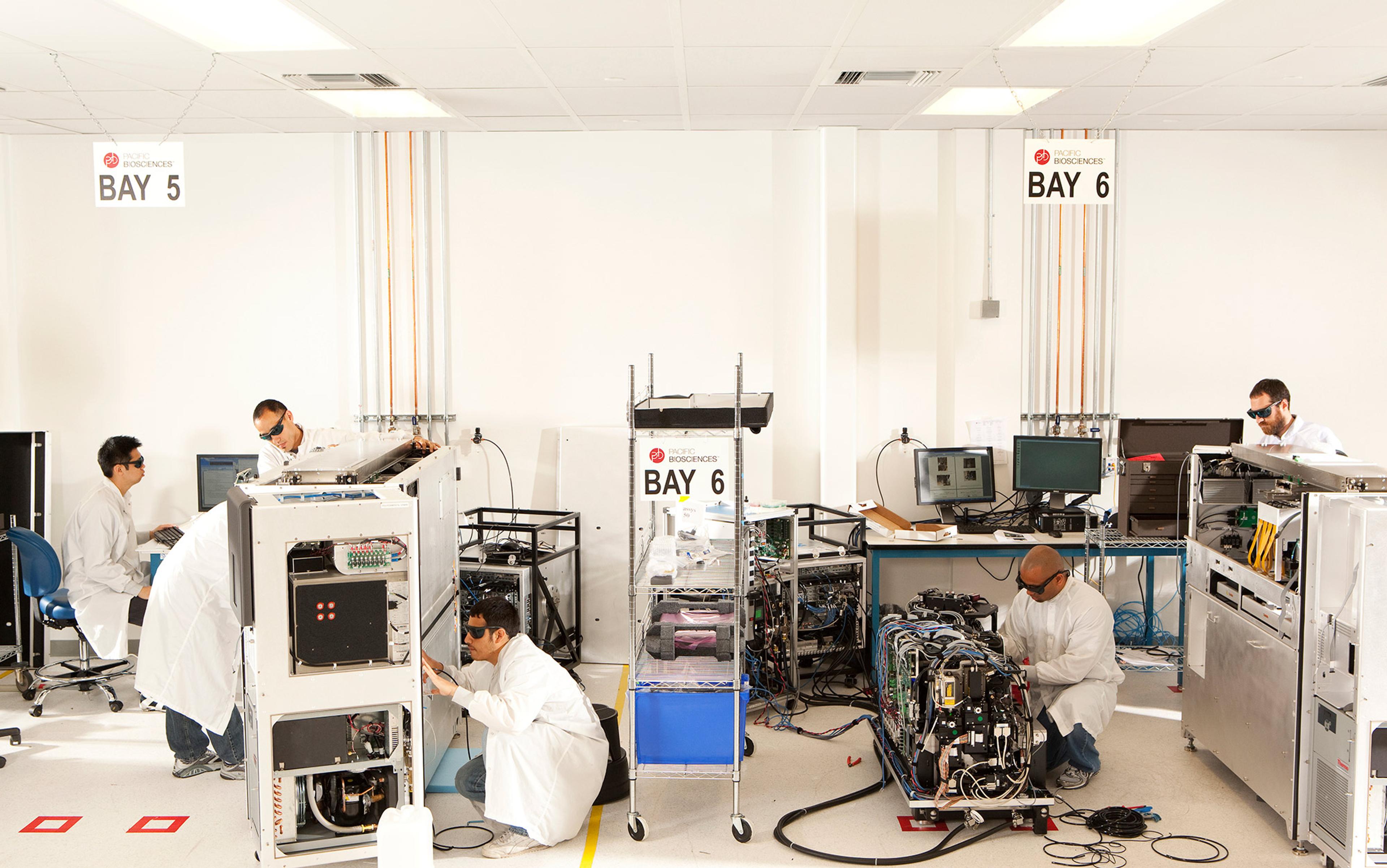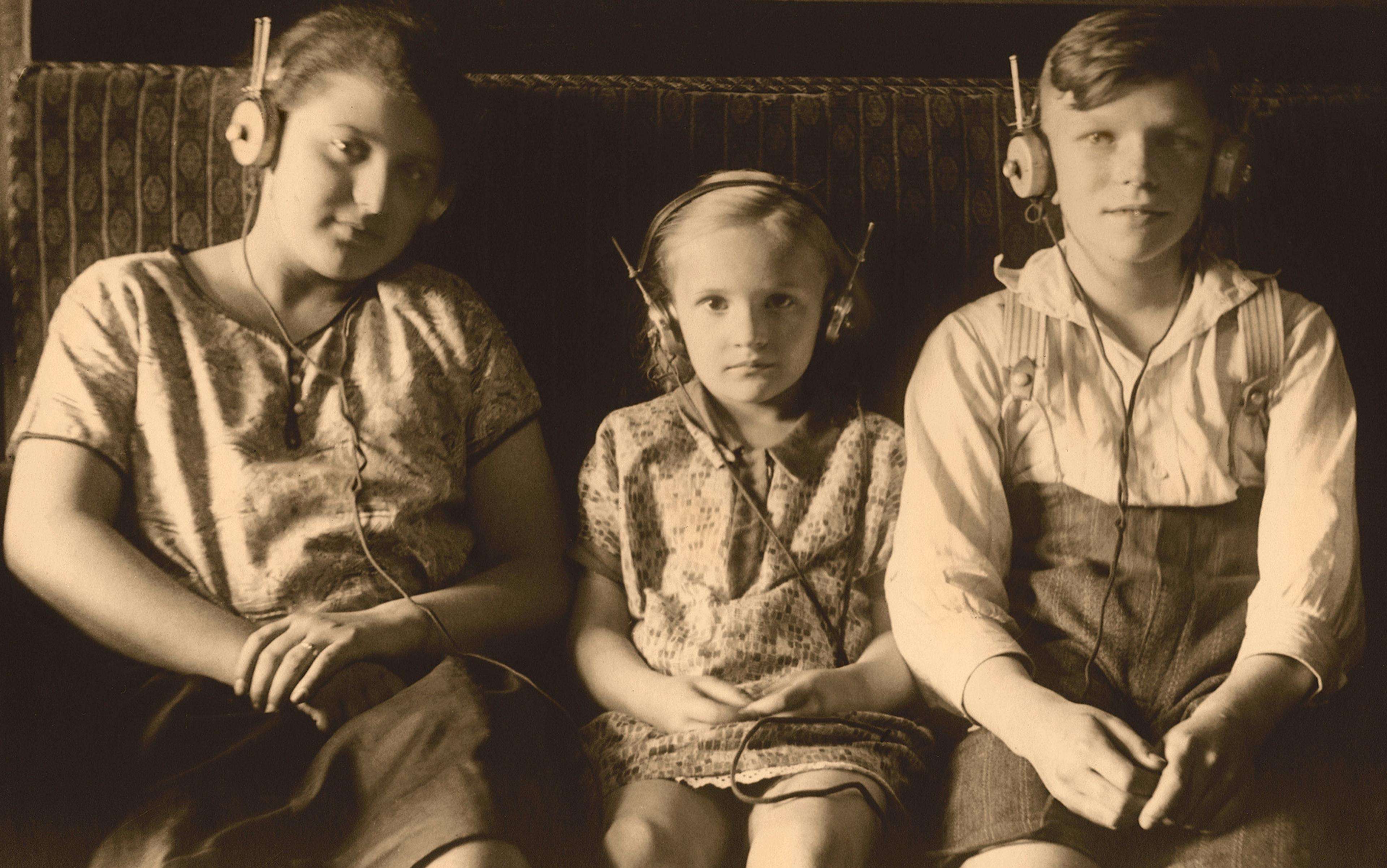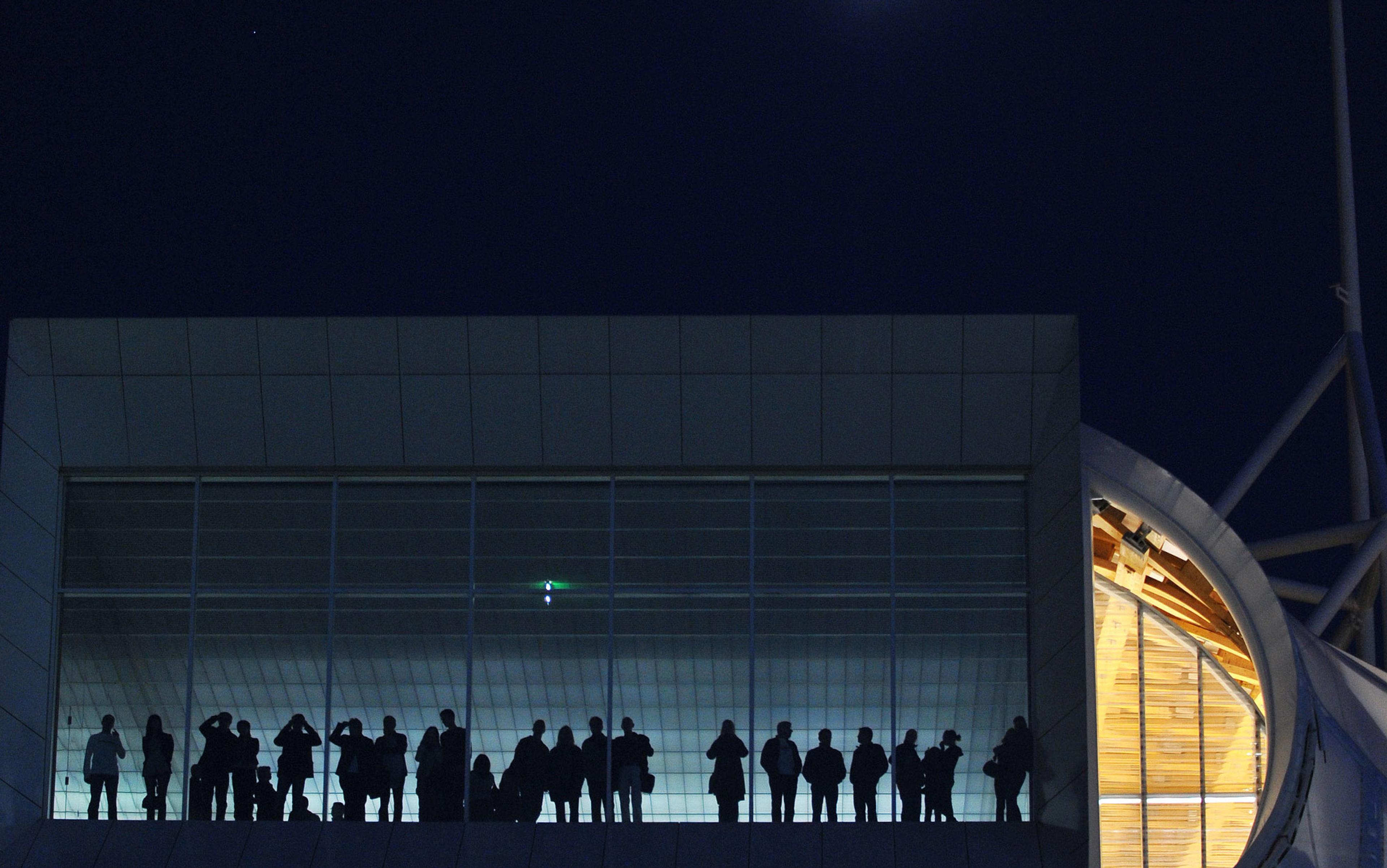There is a theory in psychology called the theory theory. It’s a theory about theories. While this might sound obvious, the theory theory leads to counterintuitive conclusions. A quarter-century ago, psychologists began to point out important links between the development of scientific theories and how everyday thinking, including children’s thinking, works. According to theory theorists, a child learns by constructing a theory of the world and testing it against experience. In this sense, children are little scientists – they hypothesise on the basis of observations, test their hypotheses experimentally, and then revise their views in light of the evidence they gather.
According to Alison Gopnik, a theory theorist at the University of California, Berkeley, the analogy works both ways. It’s not just that ‘children are little scientists’, she wrote in her paper ‘The Scientist as Child’ (1996), ‘but that scientists are big children.’ Depending on where you look, you can see the scientific method in a child, or spot the inner child in a scientist. Either way, the theory theory makes it easy to see connections between elementary learning and scientific theorising.
This should be pretty surprising. After all, scientists go through a lot of training in order to think the way they do. Their results are exact; their methods exacting. Most of us share the sense that scientific thinking is difficult, even for scientists. This perceived difficulty has bolstered (at least until recently) the collective respect for scientific expertise on which the support of cutting-edge research depends. It’s also what gives the theory theory its powerful punch. If science is so hard, how can children – and, some theory theorists argue, even infants – think like scientists in any meaningful sense? Indeed, in the age of what Erik M. Conway and Naomi Oreskes call “the merchants of doubt” (not to say in the age of Trump), isn’t it dangerous to suggest that science is a matter of child’s play?
To gain purchase on this question, let’s take a step back. Claims that children are scientists rest on a certain idea about what science is. For theory theorists – and for many of the rest of us – science is about producing theories. How we do that is often represented as a short list of steps, such as ‘observe’, ‘hypothesise’, and ‘test’, steps that have been emblazoned on posters and recited in debates for the past century. But where did this idea that science is a set of steps – a method – come from? As it turns out, we don’t need to go back to Isaac Newton or the Scientific Revolution to find the history of ‘the scientific method’ in this sense. The image of science that most of us hold, even most scientists, comes from a surprising place: modern child psychology. The scientific method as we know it today comes from psychological studies of children only a century ago.
At the turn of the 20th century, psychologists were busy working out the methods of their new discipline by studying a range of ‘other minds’. Kids proved to be convenient subjects. Studying children’s mental development gave psychologists a model of thinking, including their own: scientific thinking. They saw their research methods in the minds of the children they studied. Thus, science has always been child’s play. This does not mean that it is easy, or replaceable, or that it should be done away with. Much the opposite. Returning to this formative moment shines a bright light on the authority of modern science, including its method.
In or about March 1910, scientific method changed. Unlike the transformation in human character that, in her essay ‘Mr Bennett and Mrs Brown’ (1924), Virginia Woolf would assert took place nine months later, we know the cause of this shift in ideas about scientific method. It was a little book by the American philosopher John Dewey called How We Think (1910). More specifically, it was one paragraph from the middle of Dewey’s book, in which he subjected what he called ‘a complete act of thought’ to careful analysis. Dewey’s short schematic of childhood learning would become the axiomatic modern representation of scientific thought. ‘Upon examination,’ he wrote:
each instance reveals, more or less clearly, five logically distinct steps: (i) a felt difficulty; (ii) its location and definition; (iii) suggestion of possible solution; (iv) development by reasoning of the bearings of the suggestion; (v) further observation and experiment leading to its acceptance or rejection; that is, the conclusion of belief or disbelief.
This is the modern scientific method. Dewey’s list has gone on to structure much of science education ever since. The historian John Rudolph has shown how, in the wake of How We Think, these steps were adapted by science-textbook authors as a convenient summary of the work expected of scientists and students. It was convenient shorthand. Previously, authors presenting the scientific method had leaned on the dense writings of John Stuart Mill, William Whewell, and other 19th-century logicians. Dewey gave them a much more economical account that they could now simply insert into their books.
The story would be pretty simple if it stopped there. Author publishes book, others find it useful, book influences how people have thought about science ever since. But the story is more complicated, and interesting, because Dewey wasn’t happy that the steps he outlined grew into the standard representation of scientific method. After all, he hadn’t called his book ‘How Scientists Think’ or ‘How We Should Think’. He had called it How We Think. He meant the much quoted paragraph, and the book, to describe ordinary thinking – the way people go about solving the problems of everyday life.
That’s why Dewey illustrated his ‘complete act of thought’ with mundane examples. In one, he describes how you might calculate the fastest way to get across town for a meeting. Another example is about doing the dishes. Dewey’s claim was that all thinking – from these everyday activities to the highest levels of theorising – shared a set of features that could be distinguished and studied separately. How We Think was aimed at teachers and others who needed to routinely predict and guide thinking processes of all sorts.
Dewey himself was something of an expert at this routine, having founded and, for 10 years, directed the Laboratory School at the University of Chicago. The Lab School, as it was and is known, was a major site of what would come to be called the progressive education movement. While Dewey had moved to Columbia University in New York City by the time How We Think was published, the book was in many ways the product of lessons he had learned from working with teachers and students at the Lab School from its founding in 1896 until his departure in 1904.
Schools were to philosophy as laboratories were to physics: controlled sites for the generation of knowledge
The school was a ‘laboratory’ in three senses. First, as in the later Montessori tradition, Dewey’s vision was that children learn by doing. Specifically, they learn by experimenting. At the Lab School, this meant that children, from a young age, did laboratory-style work across a range of subjects. They did chemistry by working in the kitchen; botany was learned by growing plants in the garden. Throughout, Dewey and his colleagues used terms such as ‘experiment’ and ‘laboratory’ capaciously. To them, every act of learning was seen as experimental in an important sense.
Teachers also experimented at the Lab School. In this second sense, it was a ‘laboratory’ for pedagogy. Teachers’ experimental subjects were the kids in their classrooms, on whom they tested new ideas and material. Teachers then adjusted the curricula to what seemed suited to children’s learning habits. Dewey saw student and teacher experiments as two sides of the same coin. ‘The law for presenting and treating material,’ he wrote in ‘My Pedagogic Creed’ (1897) soon after the school was founded, ‘is the law implicit within the child’s own nature.’ Experimenting in the classroom was a dynamic process between student and teacher.
In turn, Dewey’s own work was experimental. Kids learned by experimenting, teachers taught by experimenting, and Dewey philosophised by experimenting. This third sense was the one Dewey had in mind when he originally proposed ‘a complete experimental school’ to the president of the University of Chicago in 1894. The promise of such a school helped lure him away from the University of Michigan. ‘The school,’ as Dewey saw it, ‘is the one form of social life which is abstracted and under control – which is directly experimental.’ Thus, ‘if philosophy is ever to be an experimental science, the construction of a school is its starting point.’ Schools were to philosophy as laboratories were to physics: controlled sites for the generation of knowledge.
Dewey didn’t start out with the ambition to transform education and scientific understanding. Arriving in Chicago ahead of his family in the fall of 1894, he needed to find a school for his own children. This concrete need eventually grew into the Lab School. ‘There is an image of a school growing up in my mind,’ he wrote at the time to Alice, his first wife, adding: ‘the material and methods for such a school all exist now lying ’round loose in scattered form.’ Just as in the curricula he later designed, it was practical interest – in this case, an education for his own children – that paved the way for Dewey’s theoretical breakthrough.
The breakthrough was simple. Studying children in order to improve teaching taught Dewey that ‘the native and unspoiled attitude of childhood’ had a lot in common with scientific thinking. The way children approached the world was, as he put it, ‘near, very near, to the attitude of the scientific mind’. A hundred years before theory theory, Dewey was bringing children and scientists together by more than just analogy. The two groups shared something. Figuring out what they shared was the focus of much of Dewey’s work.
Looking at children seemed to reveal a lot about scientists. Using his school as a laboratory – in all three senses – gave Dewey not only a site for testing his ideas about cognition and teaching, but also a place to figure out new things about science itself. By watching children study, Dewey gained insight into his own method of thinking. Spontaneity and sociality were chief among the features that Dewey saw in children and recognised in science.
Giving children and teachers free reign in the classroom both fostered spontaneity and allowed Dewey to observe it. In recounting a lesson in drawing in his book The School and Society (1915), Dewey took pains to emphasise that any instruction given to the students ‘was not given ready-made; it was first needed, and then arrived at experimentally’. This approach gave students the opportunity to produce novel solutions, which – in turn – led to new insights about the role of spontaneity in teaching and learning. By observing ‘the free play of the children’s communicative instinct,’ Dewey decided that teaching – and science – should be spontaneous, too.
This language of instinct points to one of psychology’s major background assumptions in this period: evolutionary theory. In the decades after Charles Darwin published On the Origin of Species (1859), many psychologists of the era set to work outlining its impact on the study of the mind. Dewey’s attention to spontaneity derived from this common project. Evolution, in both the natural and mental worlds, gave a key role to chance. Random variations were necessary for species change, while spontaneous ideas were essential to mental development. Observing children at play convinced Dewey that spontaneity was crucial to scientific progress too.
He was not alone in this realisation. Across the human sciences in the late-19th century, scientists peered into ‘other minds’ and ended up seeing their own. Like Dewey, many promoted explicitly evolutionary views of human nature and the human mind. Such views enabled them to look into the minds of non-human animals in search of the roots of human reasoning. Hereditary links, however distant, between humans and their non-human relatives promised that there was always something to learn about our own minds from the careful study of the minds of others. The early years of what we now call evolutionary psychology led scientists to think of their own methods in new ways.
Take, for example, the ‘rat-in-a-maze’ set-up developed by psychologists around this time. Today, watching rats navigate mazes seems a far cry from reflecting on the nature of science. But around 1900, when this technique was developed, much was at stake in the reasoning of rats. Willard Small, a graduate student at Clark University who helped to develop the apparatus, felt he could see rats exhibit what he called ‘experimental reasoning’ as they turned left and right in pursuit of a reward. Pursuing an experimental ideal themselves, Small and his colleagues saw experiment everywhere – including in the animals they were in the midst of observing.
Rats were just one part of psychology’s teeming menagerie in these years. The booming science trapped, timed and tested cats, dogs, birds, apes and – yes – human adults and children in order to probe the mechanisms and limits of their minds. Throughout, the psychologists who studied them faced the same question: how much of what went on in other minds could be observed, and how? The psychoanalysis of Sigmund Freud was one answer to this question; the behaviourism of John Watson and, later, B F Skinner was another. As all of these investigators understood, peering into other minds was always a way of plumbing one’s own.
Spontaneity was one lesson Dewey learned from children. The intensely social nature of thinking was another
Child psychology – called ‘child study’ at the time – was no exception. Like everywhere in the new human sciences, the actual subjects of child study were not the field’s sole focus; children were often used as proxies. To many, the child’s mind was a window into their own. Innocent of shame and incapable of subterfuge (or so it was thought), children seemed to reveal the inner workings of the adult mind. While self-consciousness prevented adults from acting spontaneously in the laboratory, children had no such qualms. Their behaviour was thus seen as aspects of the adult psyche, now hidden.
Certain scientists went even further. In this evolutionary age, some saw child study as a vision of a shared past, common to all peoples and cultures. On this view, child’s play symbolised the traits and behaviours of our human – and sometimes even non-human – ancestors. Scientists reconceived the raw emotions of childhood as evidence of human prehistory. Another, often competing, view saw child’s play as necessary practice for adult life. Play-fighting among siblings prepared people for later confrontations, with higher stakes. Either way, psychologists at the turn of the 20th century saw the spontaneous activities of children as clues about the wider world, with far-reaching implications.
Dewey founded the Lab School in this heady, suggestive atmosphere. The studies he conducted there form the basis for his ‘complete act of thought’ – and, as a result, the modern scientific method. Like many of his contemporaries, he looked to children’s learning for keys to psychology’s advancement. For the field to grow, he and others felt, it would have to be open to new, often wild ideas. Scientists needed to take a cue from children, in other words, and stay alive to the improbable and even the inane.
Spontaneity was one lesson Dewey learned from children. The intensely social nature of thinking was another. Studying ‘the free play of the children’s communicative instinct’ showed him that children learn by doing and by talking. Children enter the classroom as individuals, with goals and interests to which teachers attend, but they learn best as groups, by banding together and bouncing ideas around. In a series of lectures Dewey gave in support of the Lab School and collected in the volume The School and Society, he devoted much of his attention to the interactions among the students in the classroom.
After Dewey left for Columbia, his colleague and close friend George Herbert Mead further developed these insights about the social nature of learning. A founding figure in the field of social psychology, Mead turned the study of social factors into a social theory of knowledge over the course of a long career. In the essay ‘Social Consciousness and the Consciousness of Meaning’ (1910), published the same year as How We Think, Mead concluded that there is no meaning, and perhaps no self, apart from the social context in which it exists. In philosophical terms, this view of meaning is a familiar echo of American pragmatism. In pedagogical terms, it heralded a new emphasis on the relational character of teaching and learning.
In the later essay ‘Scientific Method and Individual Thinker’ (1917), Mead rooted even the most rarefied scientific pursuits in a world of social values and social ends. For scientists, like children, progress in the pursuit of knowledge meant working out both stakes and methods in a community of co-investigators. The implications here are radical. Taken to its extreme, Mead’s view was that we never know things on our own – insofar as knowledge and learning go hand-in-hand, and all learning is social, then even our private thoughts are shaped by social relations. Childhood learning shows us something that the idealised image of the lonely genius fails to capture – and, in the end, seems closer to the realities of the scientific community.
When theory theorists see science in the mind of a child, they are seeing something that’s been there all along. The list of steps most of us were taught as elementary students was itself the product of research on elementary students. In a very real sense, we owe the ideals instilled in science and its method to a group of psychologists who looked to children in order to better understand how we think.
On one level, this hidden history shouldn’t be a surprise. The categories psychologists use to study their subjects inevitably overlap with the terms they use to describe themselves, as humans. We were all children once, after all – and this includes psychologists. Whatever it is that kids do when they encounter a new problem or try to master a task – well, we did it, too, and still do.
But the secret, well-known to most scientists, is that ‘science’ doesn’t ‘tell us’ anything. Science is a medium, not a message
What is surprising is that we have lost sight of the generative, enabling links between childhood psychology and scientific study. It should be obvious, in a sense, that children learn new material in ways that mirror the progress of scientific research. What needs explaining is not how children came to seem like ‘little scientists’ to theory theorists, but how they ever stopped seeming that way. The answer, in part, has to do with the amount of science out there – its sheer mass. There is far more science, in more specialties, published today than there was in 1900. With so much science, there’s not enough time to stay abreast of it, much less to evaluate it thoroughly. Even scientists are overwhelmed by science. How could a kid keep up?
There’s a qualitative dimension too. The stakes of defining what counts as science – and what doesn’t – are higher than ever. In an age of climate denial and vaccine skepticism, the idea of painting science with a broad brush seems ill-advised, if not politically suspect. What happens to scientific authority if the method that makes it work is in the heads of infants? These anxieties are not necessarily new, but they seem to have reached a level that makes the claims of the theory theorists more counterintuitive than ever.
Today, science is torn between accessibility and authority. Crises of replication and claims of data-dredging appear alongside such phrases as ‘studies say’ and ‘what science tells us’. But the secret, well-known to most scientists, is that ‘science’ doesn’t ‘tell us’ anything. Science is a medium – a really effective one – not a message. Dewey saw it this way: science is less what a set of people called scientists say than it is a way of saying things. Science is a style of reasoning. This is what made children ‘little scientists’, at least originally.
The story of how science got identified with one particular method remains to be told. The question, then and now, is how far that method extends and who is capable of using it. Casting children as scientists is not about taking science down a peg. Rather, linking the scientific method and child’s play might help us imagine new ways of putting science to work in the world around us.
